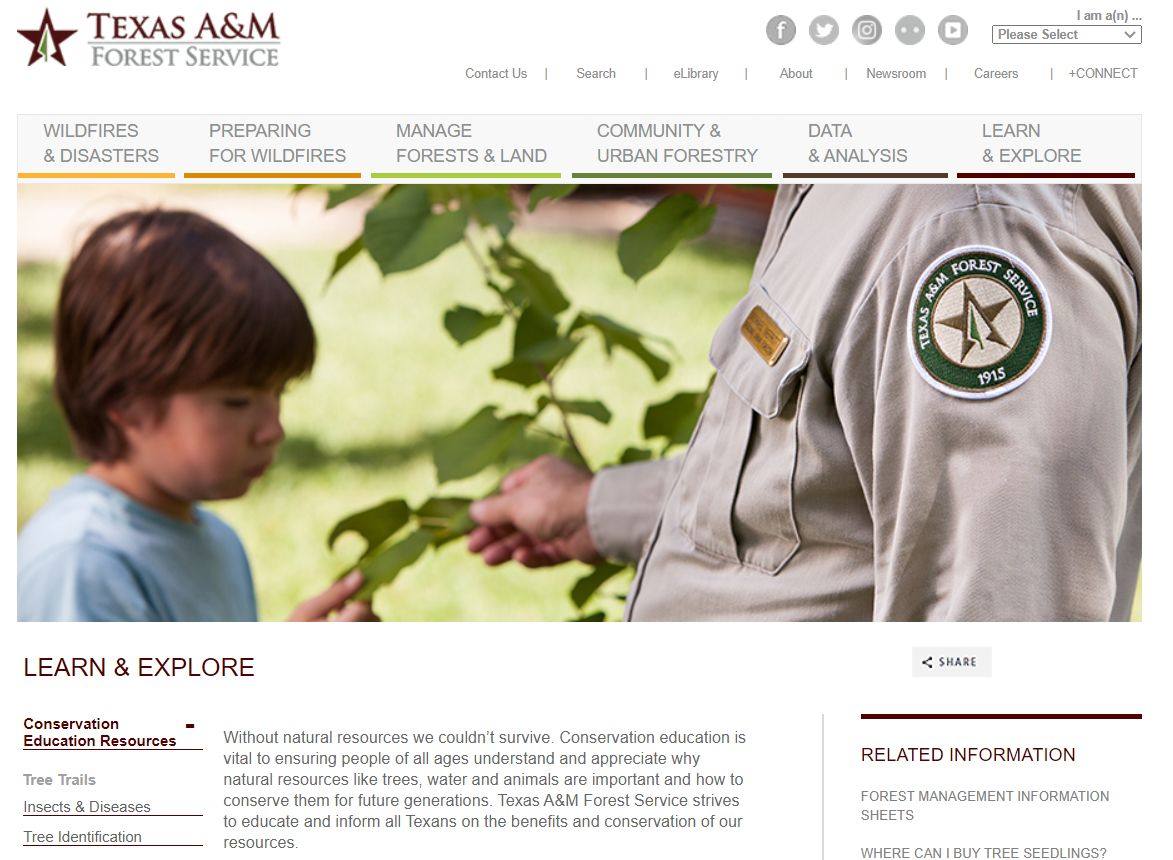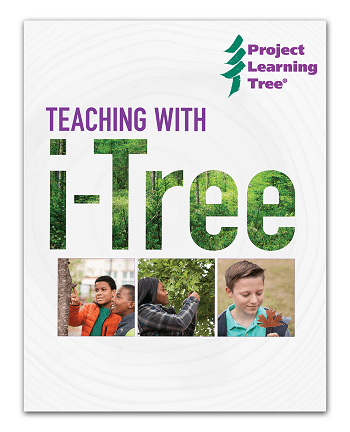Wish you had a way to engage students with the power of nature while mastering critical STEM skills? If yes, then you must check out the Texas A&M Forest Service’s educational resources. The Texas A&M Forest Service (founded in 1915) has a strong focus on educational outreach and their facilitators are all educators, including Texas-certified teachers, foresters, and more. Each works to use sound university and research-based information and curriculum. Their outreach program includes youth, students, adults, the public, and teachers.

Why Is This Important?
Conserving trees, water, and animals is more important than ever before. “Conservation ensures people of all ages understand and appreciate natural resources” (source). As a result, Forest Services seeks to educate and inform all Texans. Several of the ways they do this is through an extensive set of resources. Let’s look at a few of them below.
Activity #1: Map Trees Using Geospatial STEM Software
Introducing students to mapping geospatial space is a future skill. You can introduce students to it with tree mapping. The Tree Trails project web page describes it in this way (adapted with minor edits):
The project creates an education trail focused on trees. Students are active participants in selecting, mapping and identifying trees. They explore tree structure and function. They also research the benefits of trees, tree health, and the history of famous trees. Their participation culminates in a service learning experience.
Tree Trails serves schools in the digital age with an online, easy-to-use project. It gets kids outside and active in the environment. Get a copy of the Flyer or Overview document.
In addition to hands-on approach, Tree Trails includes ten lesson modules and offers a research-based instructional approach. This approach integrates core content area strategies and learning outcomes that combine online and outdoor activities for powerful STEM experiences.
Activity #2: Agents of Discovery
Ready to introduce young learners to augmented reality? Give the Agents of Discovery a go. The AoD augmented reality game features an app students can get for their mobile devices. This app can then access a variety of missions that students can take part in. As an educator, you get to see how Forest Service educators use the Mission maker to create their own augmented reality game in support of STEM learning. The game involves physical action, so students aren’t stuck in the classroom.
The Texas Forest Service has created several missions you can explore. One centers on the W. Goodrich Jones State Forest. Be sure to combine this mission with the forty-five minute broadcast, Virtually Wild! Contact Caroline Cruz (caroline.cruz@tfs.tamu.edu) at 936-273-2261. Or reach out to Jacey Tosh (jacey.tosh@tfs.tamu.edu) at 979-458-6650.
Looking for more Texas missions? Here’s a list:
- Herman Brown Park – Herman Brown Park
- Houston Parks Board- Houston Parks
- Mitchell Lake – Mitchell Lake Audubon Center Wetland
- Mitchell Lake Audubon Center Chapparal
- US Forest Service – W. Goodrich Jones State Forest
- U.S. Fish and Wildlife – Laguna Atascosa National Wildlife Refuge
- U.S. Fish and Wildlife – Balcones Canyonlands National Wildlife Refuge
There are many more missions in the United States available. If you live in Australia, Canada, India, New Zealand, or the United Kingdom, missions are available for learners there, too.
Activity #3: Strengthen Your STEM Program with Project Learning Tree

Looking for lesson plans and activities for a variety of grade levels? The Project Learning Tree website provides you with access. You can browse elementary, middle, and high school projects. Here’s a brief description of each:
- PreK-8 Environmental Education Activity Guide: Gives you access to ninety-six multi-disciplinary activities. The aim of each activity is to build critical skills, differentiate instruction, and, of course, to use technology. The guide covers a wide variety of topics including forests, wildlife, water, air, energy, waste, and climate change. You will also find activities on invasive species, community planning, and more.
- K-Grade 2 Activity Guide: This guide seeks to provide students with experience in exploring and collecting tree data. The focus is on understanding several key concepts that include how trees grow, as well as the the roles trees play in ecosystems. The guide also shares ways in which trees and humans interact.
There are activity guides for grades 3-5 and 6-8*. What’s more, the high school guide includes software students can get and use. This software is the i-Tree. The unit includes hands-on activities. Each assists grades 6-12 students to explore how trees fit into the ecosystem. They do this using an online tool that calculates the dollar value of benefits a tree or set of trees provide.
*Although there is a cost associated with the guides, you can obtain them at no charge when attending a professional learning session through the Texas Forest Service.
Per the website, students will apply STEM skills to learn the following:
- How to identify trees
- How to measure and assess the health of trees
- The value of trees and their role in mitigating various factors such as greenhouse gases, air quality, storm water, energy use, etc.
- How to calculate the dollar value of the benefits provided by a tree or a set of trees
- How to analyze and interpret their findings
- How to use i-Tree tools to develop plans to improve the environmental functions that trees provide
Students will want to use these tree activity sheets: Tree Time, Tree Search, Leaf Rainbow.
The Texas Forest Service has a wealth of education related materials and activities. Give their website a visit and connect with their Texas-certified, education guides. You may help young eyes see the world in a new way.


